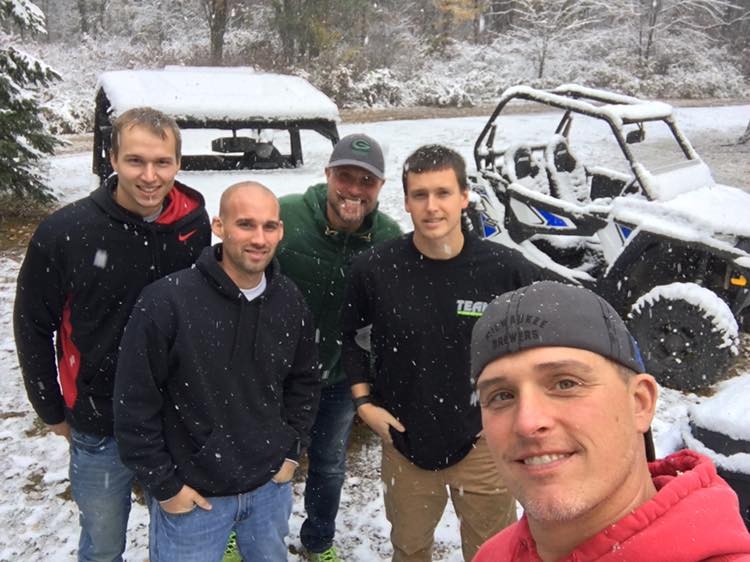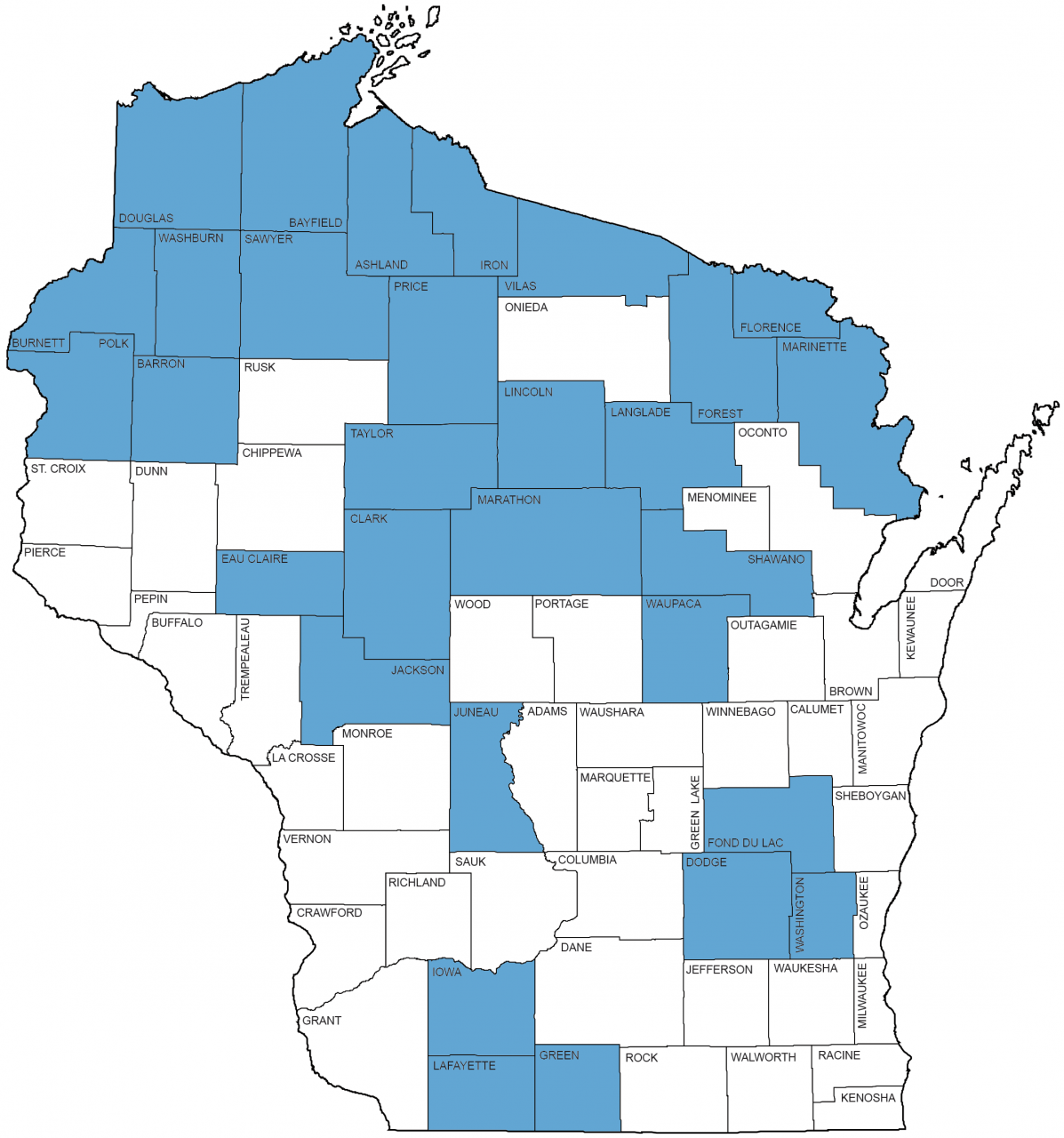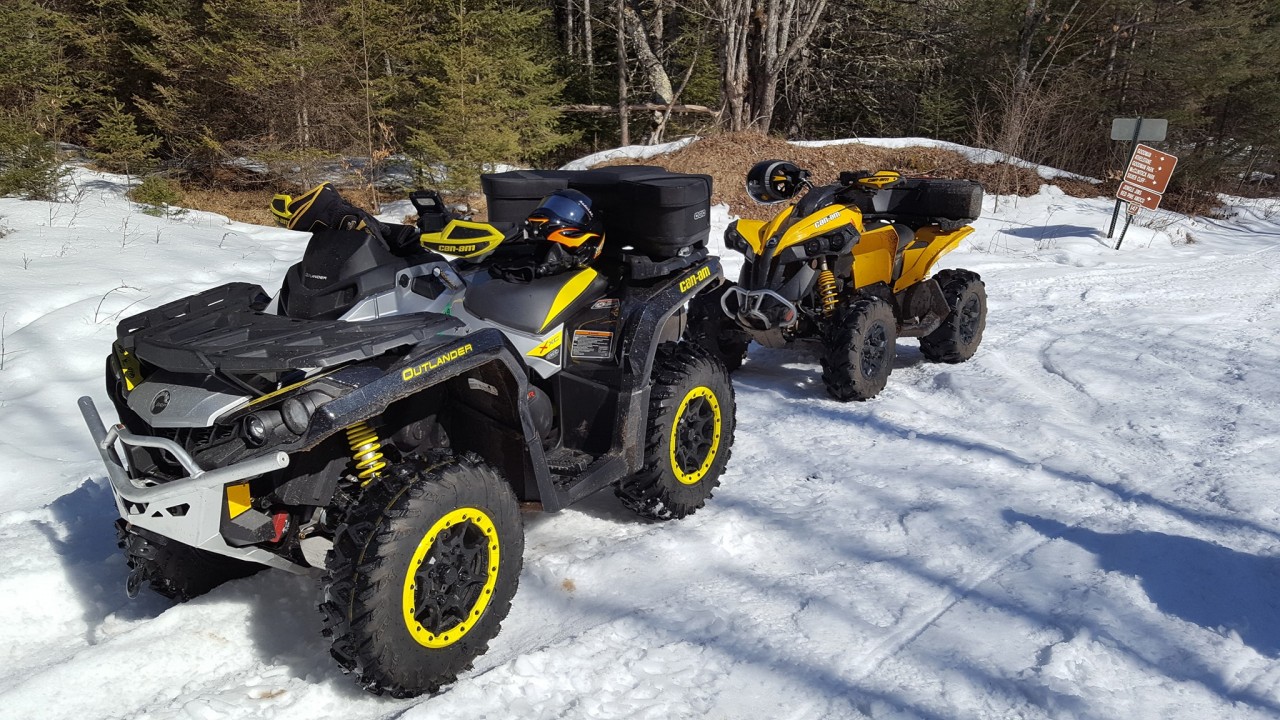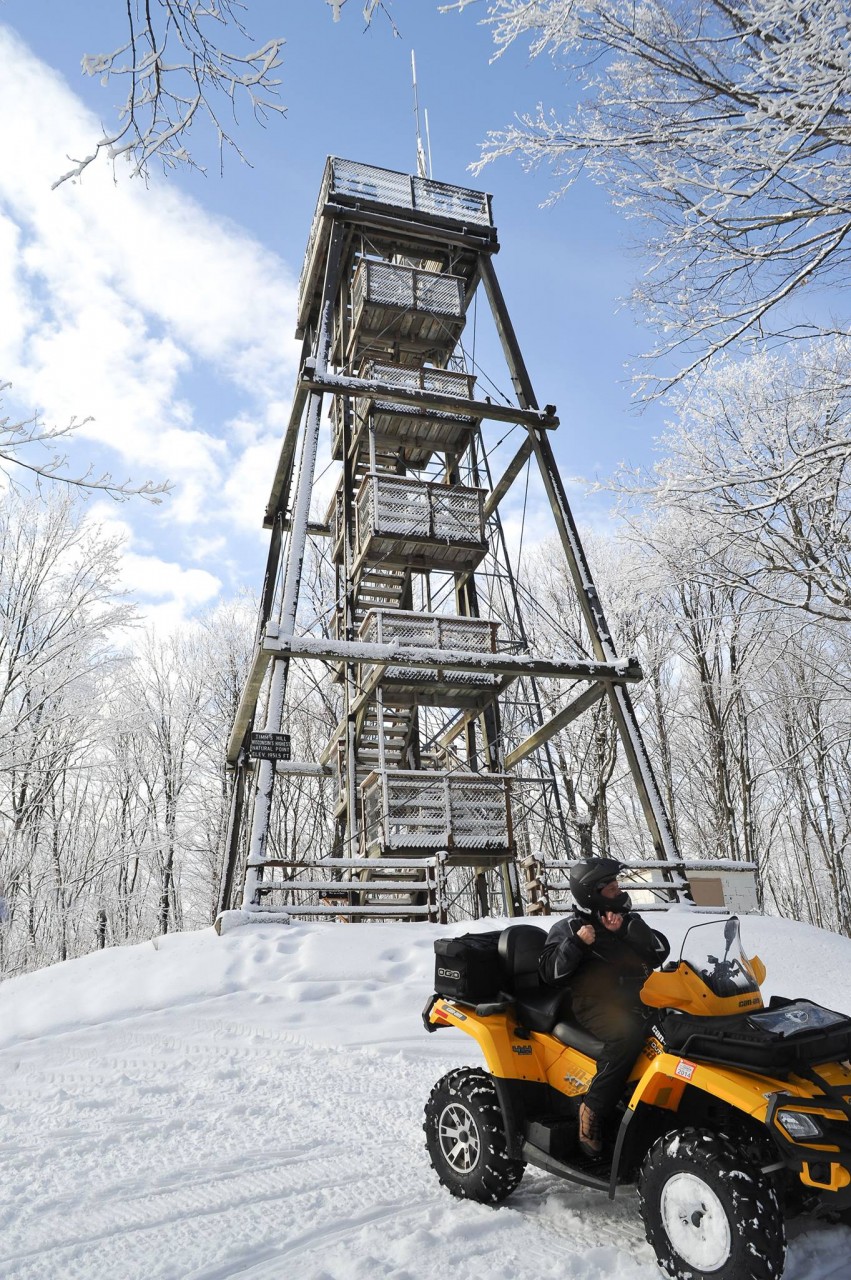Winter Riding Information
We Need You!
Did you know most of the ATV and UTV trails, summer or winter, are maintained by a local club? Without our grassroots organizations, our states trail program would be vastly different from what we enjoy today.
by Author
Grassroots efforts are the foundation to our ATV, UTV, Snowmobile and other outdoor recreation programs. Without the support by the many men, woman and children around Wisconsin, our trails program would be vastly reduced.
From grooming, to building trails, the efforts put forth by the members directly impact the overall statewide program.
Without help from enthusiasts, clubs wouldn't be able to perform the duties that support our trail network. Getting involved with clubs can be as simple as supporting them financially or you can offer to help with grooming activities, trail maintenance, fundraising, safety classes, the trail ambassador program or other activities / duties that support the club.
The Wisconsin ATV / UTV Association also needs members to support the statewide efforts to improve the image of our sport by supporting local, county, state and federal partners and by being the voice of our recreation to lawmakers in various levels of the government. The Wisconsin ATV / UTV Association helps local clubs around Wisconsin with issues such as land access, ordinances, organization and conflict resolution.
Without our membership, we would be unable to provide the statewide resources that our clubs have utilized time and time again.
By joining the Wisconsin ATV / UTV Association, you will receive our quarterly print publication Trail Tales as well as important email updates that require immediate attention.
Our association is proud to have over 100 local chapter clubs throughout Wisconsin. Check out our website at www.watva.org to find your local chapter ATV / UTV Club.
Where Can I Ride?
Riding during the winter season in Wisconsin can be a fantastic and rewarding experience. However, the dynamics of the winter climate in Wisconsin means that the riding opportunities are not uniform. Research is needed prior to riding someplace new in Wisconsin during winter.
by Author
During Spring, Summer and Fall, Wisconsin's ATV / UTV trails are either open or closed. It's pretty black and white. However, when we are dealing with winter conditions, a lot of land managers must deal with additional circumstances that will dictate if a trail is open for ATV / UTV use.
It can be as simple as the native soils only support travel when the ground is frozen or it can be a complex situation involving politics and issues with other user groups on shared trails.
Regardless of the situations, it's vital that you check with the locals before you head to your riding destination. On page 7, we have provided a simple map showing the counties in Wisconsin that allow some sort of Winter riding opportunities.
What the map doesn't show are the specific rules for each county. As an example, Burnett County (northwestern Wisconsin) offers 80 miles of frozen ground ATV / UTV trails as well as 122 miles of winter trails, per their web site. For the winter trails, they require a minimum of four-inch groomed surfaces before they are open.
The Dun-Good trails in Marinette County (northeast Wisconsin), are open all year regardless of the surface condition (they do close for a few weeks in spring for the spring thaw).
As you can see, each trail system can have their own requirements for being open during Winter.
Riding on frozen surfaces in Wisconsin is a completely different story. Any motorized vehicle can travel along Wisconsin's waterways as long as it's frozen and there is public access to the waterway. However, some local municipals have ordinances prohibiting motorized ice travel. You will want to check with the local municipal to ensure motorized ice travel is allowed.
Ice travel opens up riding areas to places in Wisconsin that lack off-road trails. However you must use your own judgment when it comes to ice safety.
Counties Receiving Winter Trail Funding (with links if available)
Last updated: November 7th 2023
Rules & Regulations
Aside from the regular regulations that apply to ATVs and UTVs, there are some other regulations you should be aware of if you're riding in Winter or on frozen surfaces.
by Author
Mechanically speaking, your machine must have a spark arrester at all times, even during the winter season. The ATV or UTV cannot exceed 96 decibels.
First and foremost, ATVs and UTVs are not allowed on snowmobile trails unless they are marked for ATV and UTV traffic. It is extremely important that you check the trail before riding on it as illegal use on a snowmobile trail could threaten the trail from closure if it's abused. This type of behavior also threatens future multi-use trail opportunities. Check with the county or local club to ensure that the trail is indeed open to ATV and UTV vehicles prior to riding.
If you're going to head out on the ice, it's important to keep alert for any ice shacks (fish shanty). Our laws state that you must slow down to 10 miles per hour or less when you are within 100 feet of an ice fishing shanty or person not on a snowmobile, ATV or other motorized vehicles.
ATVs and UTVs that are outfitted with tracks cannot be registered as an ATV, UTV or snowmobile. Therefore they can only be operated on private property or frozen surfaces.
Some areas may have ordinances regarding the installation of floats on ATVs and UTVs as well as additional permits. Check the local ordinances and make sure to read any signs posted at the entrance or exits of a frozen body of water. You should also check with local law enforcement agencies, DNR offices or bait shops to get the most current information on ice conditions.
Snowplowing with ATVs and UTVs
Wisconsin allows the use of ATVs and UTVs for snow removal throughout the state under the following restrictions:
- At a speed not to exceed 5 mph while on a public sidewalk
- At a speed not to exceed 15 mph while on or adjacent to a roadway
- Operation is allowed on all roadways where the motor vehicle speed limit is 45 mph or less
- Operation shall be restricted to the far right hand side of the road
- Operation is also allowed on roads that are legal and open ATV Routes
- Operators must be 16 years or older and if born on or after
- January 1, 1988 must also possess a valid ATV Safety Certificate.
- Operation is only allowed between October 1 and April 30 for the purpose of removing snow
- Operators may not travel at a distance greater than 2 miles from
- Their original starting or loading point
- Machines must display one or more illuminated, yellow lights that are flashing or rotating and visible for 360 degrees
Other Provisions:
- A city, village, or town may enact an ordinance authorizing the operation of ATVs with snow removal devices (that are operating for snow removal purposes) on roads where the speed limit is greater than 45 mph, if the road is located within the territorial boundaries of that city, village, or town; regardless of who has jurisdiction over the particular roadway.
- ATVs/UTVs are required to have their headlamps on at all times while operating on any road. Headlamps must be able to illuminate an object at least 200 feet away. Tail lights must be visible from at least 500 feet away during the hours of darkness. Operators must be certain that their snow removal equipment does not interfere with these legal lighting requirements.
- ATVs/UTVs must have current Public Use Registration while operating on public roadways, public road right of ways or on public sidewalks.
- Helmets are required for all operator's under age 18, except while operating on lands under the ownership or management of their immediate family.
For all of the rules and regulations that apply to ATV and UTV operation, please check out the official regulation booklet from the Wisconsin Department of Natural Resources. You can find that booklet at the following website address:
http://dnr.wi.gov/files/PDF/pubs/le/LE0500.pdf
Information posted above was taken directly from the WI DNR
Safety Information
Aside from the regular regulations that apply to ATVs and UTVs, there are some other regulations you should be aware of if you're riding in Winter or on frozen surfaces.
by Author
Proper winter wear
Before we can even talk about safe riding techniques, its important that anyone venturing out for winter riding protects their own body with proper riding attire.
Staying warm is going to be your main priority to a safe and enjoyable ride. Using loose, light and comfortable layers is a great way to keep warm. Loose fitting and layered clothing actually traps warm air generated by your body. Something to keep in mind is that the first layer of clothing should be a synthetic material that can help draw moisture away from your skin. Next, you should have insulated layer. The outer most laster should protect you from wind and rain / snow.
Keeping the loose clothing in mind, your feet are going to be prone to frostbite as well. Two layers of loose fitting socks will help. Along with socks, make sure to wear heavily insulated boots as your machine could become entrapped by deep snow.
Insulated gloves are also going to be important as you will be operating an ATV and / or UTV which requires some level of dexterity with your fingers. If the core temperature of your body starts to drop, blood flow will be restricted to your outer extremities which reduces your dexterity in your finger and toes. Once that happens, your fingers and toes are highly susceptible to frostbite and its important to keep them covered and warm.
Your head protection is also a key element to staying safe. A proper fitting helmet that covers all of your skin around your head and face is the best option for preventing frostbite on exposed skin surfaces.
Snowplowing with your ATV or UTV might require a less intrusive helmet (such as a DOT approved half helmet). Wearing a mask that covers the skin surfaces on your head and fits under a helmet is another great alternative.
How much ice is needed before it can be safe ice? The answer to this riddle is: there is no such thing as safe ice!
Wisconsin allows ATVs and UTVs to ride on frozen surfaces of any navigable, designated waterways. This makes using ATVs and UTVs for ice fishing very popular.
Before you head out on the ice, you will want to check with local resources on the latest ice conditions. The Internet is a great resource for checking on ice depth and conditions, however you will want to make sure the information you gather is accurate and timely. There are a few great sites that not only give you ice conditions, but user reports on how well the fish are biting!
Studding your tires for better traction can improve your performance on frozen surfaces. Make sure you follow the proper instructions for installation and maintenance on studs. If you do have studs on your vehicle, make sure to stay on the ice. Studded tires can be very harmful to any trail surface, especially groomed snow!
Tracked vehicles can be very useful for winter riding (however they are not allowed on any public trail). Make sure to keep the tracks maintained per the manufacturers guidelines!
Riding on snow
Riding on snow can be a highly enjoyable experience but also presents its own set of hazards that are unique to winter reason riding.
ATVs and UTVs work great on packed snow, however can struggle in fresh snow. If you're traveling on an unpacked surface, the snow can accumulate and pack under the frame of the vehicle, eventually lifting it off the ground. Furthermore, if your machine leaves a packed surface it can quickly become stuck in loose snow.
Properly maintained and treaded tires will greatly help with traction on snow. Make sure you have the proper tires before heading out on a ride.
A winch can be a valuable asset to have on your machine during winter riding. Making sure the winch is in proper working order and that the cable is functional is critical. Unspooling and inspecting your winch cable is a great way to make sure it will be ready when you need it. Furthermore, spooling your winch cable properly will increase the life of the cable and reduce any chance of a mechanical issue should you need it while out on a trail. Remember to follow the safety guidelines for proper winching as a snapped cable can injure someone.
The Wisconsin ATV / UTV Association always suggests taking a hands on safety course. Understanding how your machine handles (in both dirt and snow conditions) will increase your level of overall safety while riding. Remember, if you have an accident or breakdown in winter, your at a higher risk of weather related exposure injuries.
Winter Trail Riding E-book
Download this information in a booklet form by clicking "Download File" below.





